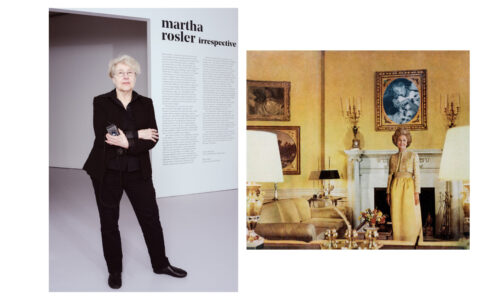Since the Islamic Revolution of 1979, Persians, in and out of Iran, faced diverse and complex issues. Persian families who feared insecurity and suffered social and psychological issues fled to different countries. Three million Persian families relocated to different countries to seek asylum and refuge. Their purpose was to improve their quality of life by adapting and assimilating themselves into a new culture. While reinventing themselves and finding better prospects of living, they faced social challenges and hardships. Moreover, it was not easy to embrace a different culture, practices, and customs. Most Persian families suffered cultural shock and identity crisis and got involved with unethical behavior such as illegal relationships, prostitution, and the use of drugs.
The book Persian Wars VOL. 1: HOME AND AWAY is pen down by Bahman Akhavan. The four separate and unrelated stories explain the lives of different Iranian individuals and families from different backgrounds and settings, struggling with their conflicts and challenges. They faced relations with family, conflicts risen through political convictions, struggles to fit in society, reconciling love and lust with family and traditions. Adapting the moral ethics of western culture has distorted personality and relationships. Since the revolution, patriarchy has been promoted and strengthened by reverting to ancient Islamic codes; for instance, providing freedom and liberty to females regarding their dressing, appearance, and mobility. Male and females are allowed to acquire education together, work in offices and enjoy various leisure activities altogether. Liberal and modern society adversely impacted women’s independence and freedom, which gave rise to immoral and indecent acts.
The four stories found in Persian Wars have common elements displaying the complex culture of prejudice, romance, marriage, genders, moral ethics, and sexual orientations. The story portrays that Iranian culture is adult-oriented, with parents being involved in making major decisions for their children. It involves decisions regarding their education, marriage, and profession. Family members are expected to listen and obey the decision of their elders. Traditionally, the male head of the family would make most major domestic and financial decisions and often consult with other male family members. Therefore, young Iranian girls are pressured by their families to accept marriages.
The writer also expounds that Iranian culture is class-based and is divided between traditional and modern classes. Different classes such as upper, middle, and lower classes have different attitudes, cultural practices. They are striving to overcome patriarchy and gender inequalities, conflicts risen through political and social differences, convictions, reconciling love, prejudice, and lust with family.
In the book Persian Wars, the story of a young girl, Shahrzad, explicates the impact of growing differences in traditional and modern classes in Persian families. The social class hierarchy determined by income, wealth, occupational prestige, and high education has adversely affected Persian families and their decision-making capacity. For instance, a beautiful stunning Iranian girl named Shahrazad meets a young Iranian student, Farhad, at MIT. A brief engagement and talk with each other in Beverly Hills developed positive feelings and fascinated one another. Shahrzad belonged to a Jewish family, while Farhad Ghassemi, a Ph.D. student at MIT, is associated with a Muslim family. Both are in love. However, due to prevailing social differences, biased attitudes, and prejudice, Shahrzad and Farhad could not get married. Conversely, the father of Shahrzad, Habib, opposed this relationship and forced her to marry in a Muslim family. He devised a plan for his financial benefit as he declared that his business would flourish by getting into marriage with Sami.
The story depicted that though Persian families have transitioned well into the western culture, yet they maintained their traditional values and morals and preferred compromising for the decision taken by the family. The writer thinks that the educated and modern classes have increased parental and spousal violence and discrimination. In the absence of a modern and balanced legal code, Persian families fail to cope with the prevailing cultural biases and prejudice and are unable to make quality decisions.
The stories in the book determine that all the characters have faced a challenge, crisis, or a realization that enabled them to reach the crossroads. Some of these challenges are particular to Persians, in Iran and abroad. A major change in their customary beliefs and behavior helped them to develop a better understanding of themselves, achieve their objectives and improve their relationships. The themes of this book are universal and illustrate how individuals can overcome cultural imperatives, habits, traditions, and even prejudices to arrive at a better understanding of themselves, achieve their personal goals and objectives, and improve their relationships.
The book explains that most of these realizations and transformations are universal; relationships with family contrast modern social behavior with traditional family values and realize personal goals and ambitions within family pressures and expectations. Further illustrating, the writer says that the readers should have an unbiased and open mind that certainly paves the way to build positive societal relationships and values.
As readers, we know that the Persians are family-oriented; they understand and preserve their values. Many families maintain a strong relationship with their children; they simply live for their children. Families stay together and expect that their family values and moral codes are traditionally followed. The roles of Persian families are well-defined in terms of gender, and expectations are clear.
The book defines that no matter how Persian families have grown advanced, they have not let go of their culture and traditions rather than making an effort to incorporate them into their present cultural background. This enables them to maintain their legacy. Moreover, positive upbringing and family support set the foundation for lifelong learning for Persian families. Consequently, maintaining family values has enabled young people to overcome cultural imperatives, habits, traditions, and prejudices. It helps to realize the best version of themselves, achieve their goals and make life more purposeful.
The book helps readers to get inspired how Iranian young people, regardless of their background, struggles, and crisis, have come up as resilient nations. They developed an unbiased and open-minded attitude that helped them uphold the positive relationship, family values, and moral ethics in their society.




